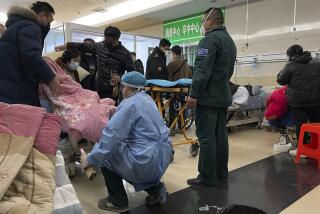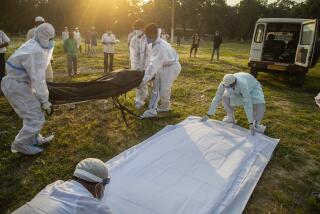Doctors battling the coronavirus in India are being infected, trolled and evicted
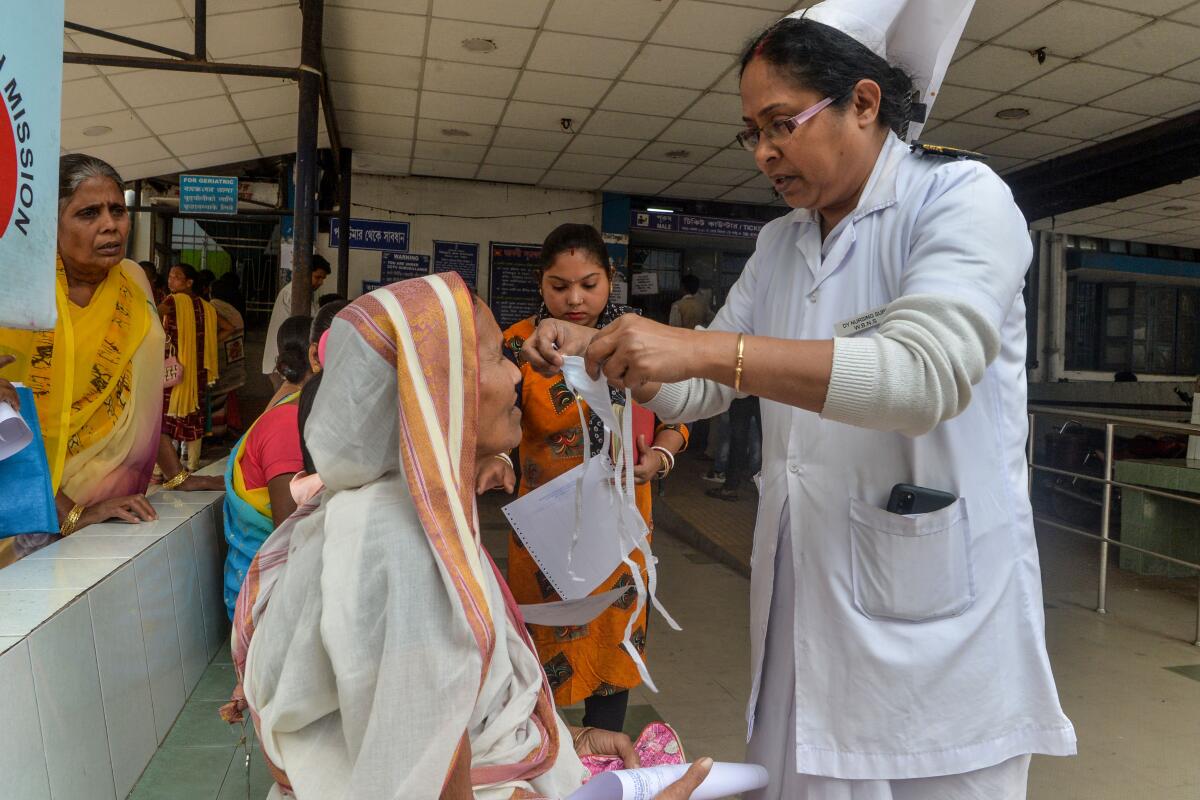
- Share via
MUMBAI, India — After a patient at a hospital in northern India tested positive for COVID-19, it wasn’t long before some of the medical staff began showing symptoms, too.
Doctors at Nalanda Medical College in Bihar state, short of protective equipment, treated the patient while wearing only a standard surgical kit — three-ply mask, gloves and plastic-coated apron. They ate in a mess hall shared by 83 doctors, all of whom now worry they were exposed to the coronavirus.
But when the doctors asked the hospital superintendent if they could be quarantined, they were told to keep working. With a pandemic spreading — and in an impoverished state with just one government doctor for every 28,000 people — the hospital couldn’t afford to lose them. So they took medication and kept seeing patients.
“It is easy to blame the superintendent,” said Manu Gautam, president of the United Resident and Doctors Assn. of India, a doctors advocacy group. “But he is also under pressure. He is in a state where the population is too high and the doctors are too few. If 83 of them go into quarantine, it is a huge blow.”
As the World Health Organization warns of a global shortage of medical equipment in the COVID-19 pandemic, India’s beleaguered hospitals find themselves fighting an accelerating outbreak with too few doctors, health workers, test kits, beds, ventilators, protective gear, masks or other essential supplies.
A week ago, Prime Minister Narendra Modi called for a nationwide clanging of plates to show support for health workers. But after Kamna Kakkar, an anesthesiologist in Haryana state, spoke out on social media about the lack of protective equipment — “When they arrive, send N95 masks to my grave,” she tweeted — Modi supporters hounded her on Twitter and called her “fake doc.” She deleted her tweets and took her account private.
Health experts are watching the outbreak in India with increasing alarm. The world’s second most populous nation, after China, has seen cases of the coronavirus double over the last week to more than 1,200 by Tuesday, with 32 fatalities.
But the true extent of the epidemic here could be far worse because Modi’s government has carried out few tests, and because much of the population lives in tightly packed slums and tenements where it is practically impossible to observe physical distancing.
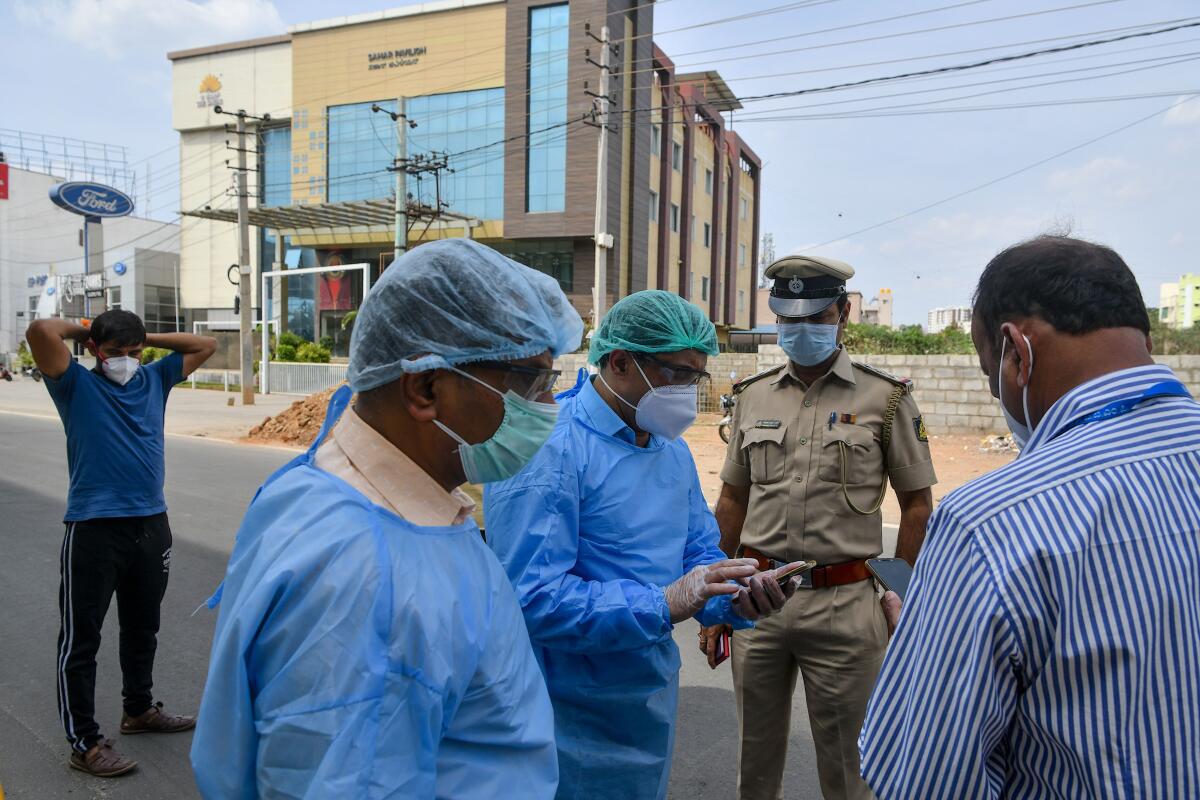
Doctors and hospital personnel are particularly at risk of contracting COVID-19, and the parlous state of India’s medical system has raised concerns that its health workers will be exposed to the virus in even greater numbers.
Medical staff at a few hospitals have threatened to go on strike over a lack of equipment. Experts worry that others will cease working due to illness, quarantine or fear of being infected.
“Because we know we are exposed to the virus, we are always insecure,” said Ravi Raman, a doctor at Nalanda Medical College. “I used to live with my parents and sister, but I’ve moved to another apartment. I need to protect my family.”
The latest updates from our reporters in California and around the world
India, with 1.3 billion people, has just one doctor for every 1,445 people, fewer than the WHO-recommended ratio of one to 1,000, with vast disparities in quality and access to care. Most coronavirus cases are being handled by underfunded public sector hospitals where the doctor-to-patient ratios are far worse, with just one government doctor for every 10,926 people.
Despite India’s successes in eradicating polio and reducing the incidence of other infectious diseases, public spending on healthcare is among the lowest of any major economy. Private hospitals treat a growing share of patients, but most Indians lack health insurance. That increases pressure on the government health system, with some states now moving to take over private facilities to fight COVID-19.
Experts say India’s failure to stockpile essential medical supplies could jeopardize the safety of frontline medical professionals, risking a collapse of the health system in the midst of a pandemic. Some scientists believe that by mid-May, India could have hundreds of thousands of infections, meaning it would run out of hospital beds.
“If the medical fraternity starts crumbling in this situation, things will spiral out of control,” said Jerryl Banait, a Mumbai doctor who has petitioned India’s Supreme Court to address the shortage of protective equipment.
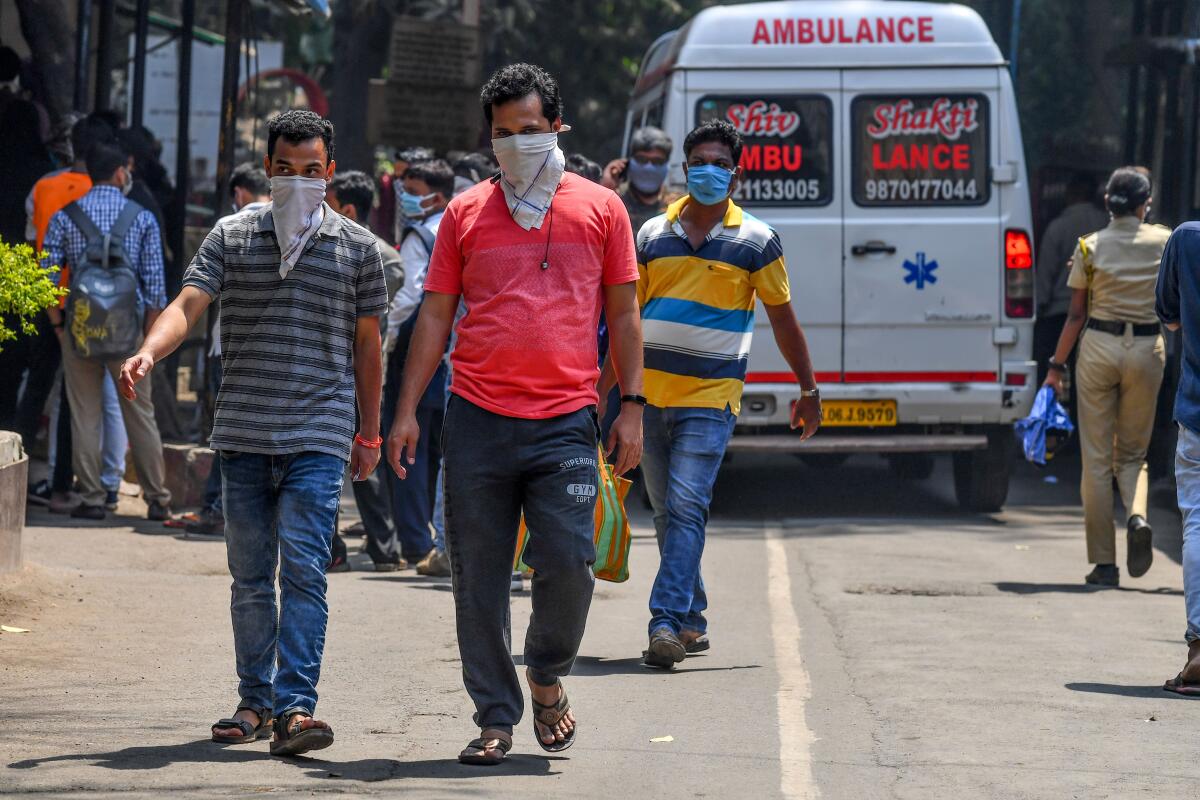
Although India recorded its first case of the coronavirus on Jan. 30, and the WHO urged countries to build up supplies of protective equipment in late February, the Indian government waited until March 19 to prohibit the export of domestically manufactured surgical masks and other medical gear.
It took several more days for the government to block exports of respiratory devices, even as countries around the world were urgently trying to find ventilators for COVID-19 patients.
Health workers rely on personal protective equipment known as PPE — including gowns, gloves and N95 masks, which guard against the spread of respiratory pathogens. A senior doctor at a leading public hospital in Kolkata said it had only about 100 sets of protective equipment, not enough to last a week if coronavirus patients begin pouring in.
“The staff is demoralized, with older surgeons going on leave as they are in the high-risk age group,” said the doctor, who requested anonymity to protect his job. “The younger doctors are worried about countrywide shortages of PPE kits. Even if 10% of the health workers, technicians and cleaners take leave, it will be difficult to run the hospital.”
The situation is more perilous in rural India.
In one remote district of Maharashtra state, doctors were wearing raincoats to treat suspected COVID-19 patients. Over the weekend, doctors in Sevagram, in central India, were told their hospital would become a regional center for COVID-19 patients, despite having “hardly any” protective gear, one physician said.
“I know already that there will be mass desertion in the public health system — if not in quantity, in quality,” said Dr. Yogesh Jain, founder of a 200-bed charity hospital in Chhattisgarh, one of India’s poorest states.
Jain’s hospital in Bilaspur — a district of more than 2.6 million people — received about two dozen sets of protective gear and 150 N95 masks over the weekend. The government has said that new orders could take up to one month to be delivered. Jain said he would not allow his staff to treat a suspected COVID-19 patient without adequate protection.
“For now, we are washing our hands, using whatever PPE kits we have, scrambling for more and hoping that’ll keep us safe,” Jain said.
Health workers’ fears multiplied last week after Modi imposed a three-week nationwide lockdown with four hours’ notice, stranding hundreds of thousands of migrant workers in cities far from home.
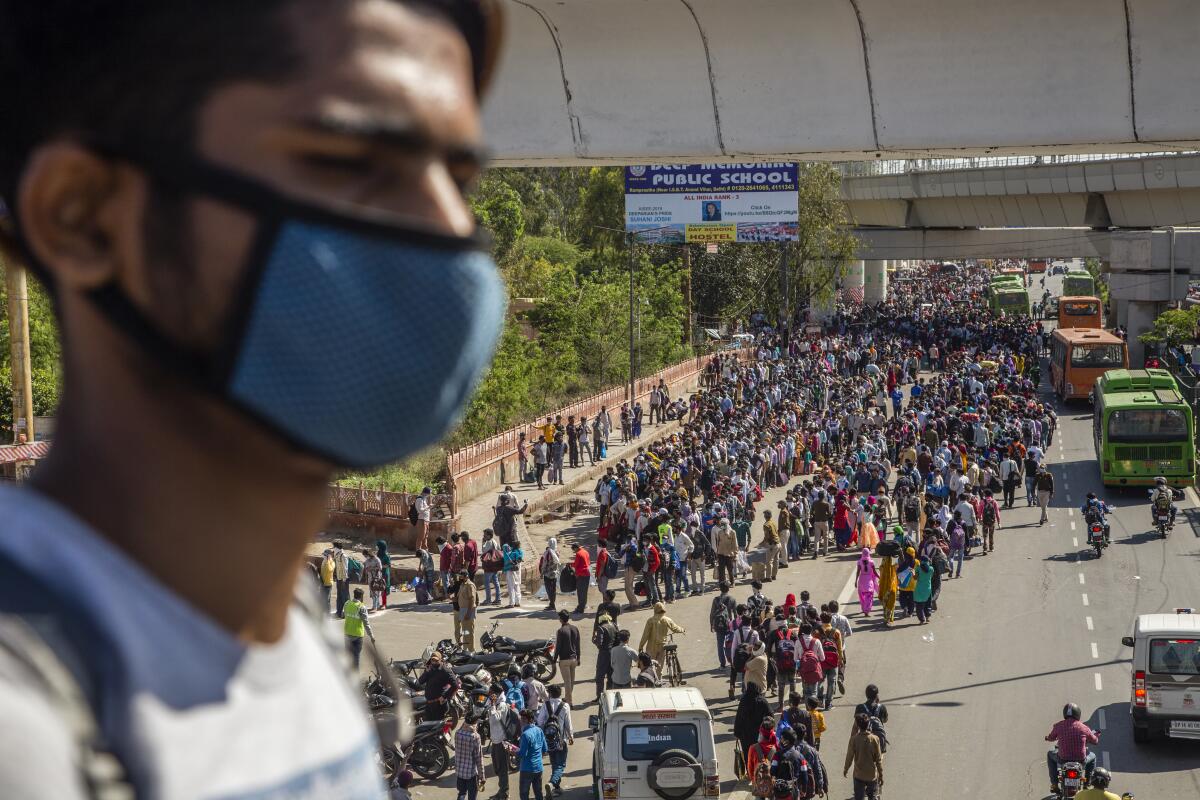
Huge crowds gathered at train stations, bus depots, homeless shelters and soup kitchens, potentially exposing many to illnesses that they could carry to distant hometowns with even weaker healthcare.
In one northern district, video published on social media Monday showed sanitation workers spraying a group of returning migrants with bleach.
“Rural areas are still relatively excluded from the pandemic,” Gautam said. “But what happened over the past few days could be dangerous.”
Doctors are also facing other challenges. Last week, physicians at the All India Institute of Medical Sciences, a leading university and hospital, said health workers treating COVID-19 patients were being forced out of their houses by landlords who believed they would spread the virus.
Modi said he was “very pained” at the reports. But experts said health workers had already lost faith in the government’s ability to protect them.
“There is always risk in treating patients, but taking a risk and committing suicide are different things,” said Vikas Bajpai, an assistant professor at the Center for Social Medicine and Community Health at Jawaharlal Nehru University in New Delhi.
“When you force people to treat patients without taking even minimal precautions, then the impression is that the government is playing with the lives of the people.”
Special correspondents Parth M.N. reported from Mumbai and Krishnan from Goa, India, and Times staff writer Bengali from Singapore.
More to Read
Sign up for Essential California
The most important California stories and recommendations in your inbox every morning.
You may occasionally receive promotional content from the Los Angeles Times.
